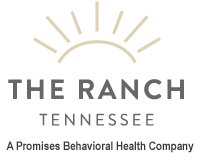Mental health treatment is essential to any student’s life, especially those who struggle with eating disorders in college. Eating disorders can affect anyone, regardless of age, gender, or background. However, college students often face unique challenges contributing to their struggle. Exploring the prevalence of eating disorders among college students, their impact on mental health, and potential treatment options can help people recover and live more fulfilling lives.
If you or a loved one is struggling with an eating disorder, don’t wait to seek help. Contact Promises Recovery Ranch today at 1.844.876.7680. Let us help you overcome your struggle and begin your journey toward recovery.
What’s the Prevalence of Eating Disorders in College?
College and eating disorders often go hand in hand. Eating disorders have the highest mortality rate of any mental health condition, making them a serious concern for college students. Nearly one-third of college students suffer from an eating disorder, including anorexia nervosa, bulimia nervosa, binge eating disorder, and orthorexia. Furthermore, it is not uncommon for college students to develop an eating disorder while in school or relapse into one during this time of transition and stress.
How Do Eating Disorders Impact Mental Health?
Eating disorders not only affect physical health but also mental health. College students’ mental health is already vulnerable, given the stress and anxiety they face while attending college. Eating disorders can exacerbate mental health issues, leading to depression disorders, anxiety disorders, and substance use. Furthermore, the stigma associated with eating disorders often prevents students from seeking help, making things worse in the long run.
What Are the Common Causes of Eating Disorders?
Several factors contribute to eating disorders in college students. Social pressure to conform to unrealistic body standards, academic stress, and peer pressure to engage in unhealthy behaviors can all contribute to developing eating disorders. Additionally, students with a history of trauma or emotional abuse may be more susceptible to developing an eating disorder as a coping mechanism.
What Are Potential Treatment Options?
Recognizing and addressing eating disorders in college students is crucial. Engaging in mental health treatment can help students overcome their struggles. The recovery journey may involve combining individual therapy, family therapy, group therapy, and medical treatment. Most importantly, creating a supportive and nurturing environment that empowers the student to take control of their recovery is key.
Promises Recovery Ranch offers a range of programs and services, including inpatient residential rehab, partial hospitalization programs, and trauma-informed care to help students navigate their recovery journey. Using evidence-based interventions, we help individuals overcome eating disorders and live more fulfilling lives.
Get Mental Health Treatment for Eating Disorders at The Ranch
If you or someone you know has been struggling with an eating disorder at any stage, the experienced and compassionate team at Promises Recovery Ranch is here to help. We offer a variety of mental health treatment programs designed to help you or a loved one overcome an eating disorder and regain control of your life. Our therapies include cognitive behavioral therapy, dialectical behavior therapy, trauma-informed care, and the trauma recovery empowerment model.
Moreover, we provide a beautiful campus with an individual setting for each room. The program features drug and alcohol detox, inpatient residential rehab, residential mental health treatment, and partial hospitalization programs to provide emotional and mental counseling for eating disorders. Additionally, we accept commercial insurance and private pay to ensure everyone can access the help and support they need.
Contact us today to speak with someone who can help. Let us guide you or your loved one on recovery and wellness. Take the first step toward a healthier and happier life by calling 1.844.876.7680 or completing our online form.

